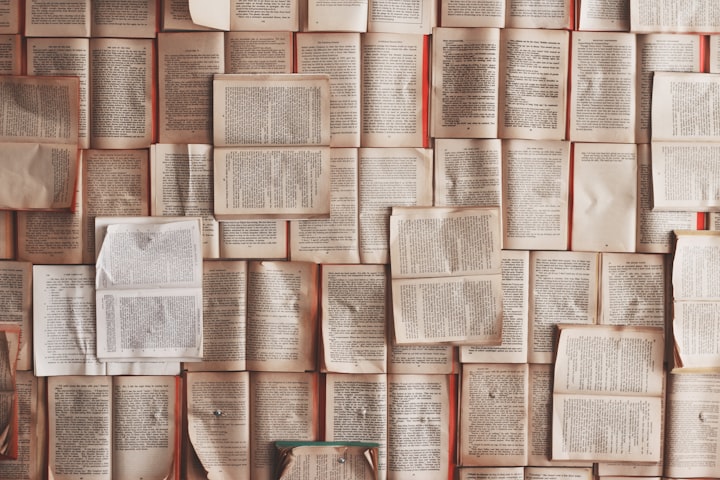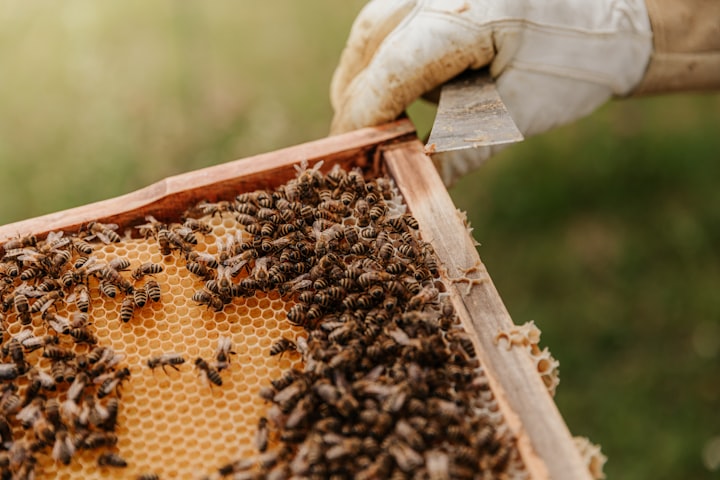Liberate Creativity and Science
Often creativity is reserved for artists and writers, the curators of beauty of the world we live in. Let’s get rid of that notion.

This article was written by Andrea Lloyd and originally published in The Particle on 2/20/2020.
Last semester I had an “Introduction to Creativity” class as a part of my graduate program. I kid you not.
While this class was focused on the art and copy of the advertising industry, there were opportunities to learn broadly about the creative process as studied by academics.
The untrained eye sees creativity as an endemic gene in the artist’s DNA, believing once scientists break open the human genome then they too will have the opportunity to flip the switch and select a paintbrush. This worldview is insulting, though it’s only acknowledged in whispers.
Creativity is a skill. It comes with practice. With painstaking hours, with the candle lit late into the night, a creator scribbling out plots across a well worn notebook and sketching designs in the weathered art journal. In the morning, the sun greets the desk, but the creator and their notes are not there. They’re gone for coffee, bringing their scrawled out handwriting with them.
Why do we only think of one kind of creative?
Every so often someone posts a listicles on about “How to boost your creativity.” Keeping a notebook on hand, cutting out distractions, try doing things differently… many of us has heard of these things before. I don’t subscribe to it.
An alternative definition is a person who produces from original thought and expression. Borrowing intertextuality from literary studies, however, there is no such thing as a true original. Our brains are constantly stewing together everything our minds have been exposed to throughout the day. Merging together our media, our hobbies, our worldview…
With an interconnected world, all that a person can produce is build upon the work that has come before them. Sometimes this can be in the form of plagiarism or parody. Other times it’s allusions or translations. But by building, or interpreting, a work, we use our cognitive creative abilities to add to the human experience. The cult-classic TV show Futurama wouldn’t be what it is if it didn’t have satirical references to Star Trek or the erroneous use of Isaac Asimov’s Three Laws of Robotics.
Incubation, that stew of everything, is one of the five steps in the creative process, according to Social Psychologist Graham Wallas.
- Preparation — the stage where humans identify the problem and gather information about it.
- Incubation — allowing the subconscious to work on the problem, allowing for surprise connections that a conscious mind may not realize
- Illumination — the EUREKA moment, when everything clicks together
- Verification — taking the problem and solution, leading to testing and feedback.
- Reflection — considering the final results and remembering the process.
When you scrutinize this list, it’s not far from the scientific method. Rather than a streamlined structure, this creative process incorporates the intricacies of life into the scientist’s process of discovery.
- A scientist prepares and identifies a problem. They research previous experiments, gathering previous information. They beginning testing their own science and engineering experiments and troubleshooting procedures.
- Contrary to popular belief, scientists are normal people. They allow themselves time away from the lab. Taking a coffee break, allowing formulas and principles ruminate and rest in the brain. Speaking with colleagues candidly about life or work.
- The lightbulb clicks. The hard work pays off. The experiment produces results that were unknown previously. The scientists has created a new idea, potentially adding incrementally to the vault of collective human knowledge.
- Before to be completely added to the vault, peers review the results to make sure that it holds to the standard of science.
- Many people might consider the final result and remember the process, using the conclusions to build on their own new experiments in the future.
Some argue that this discovery isn’t actually creative. Why the hell not? A person took the literature that preceded them, found a hole or a twist to improve the human experience and understanding, then created the knowledge that we now have today.
So if it’s as easy as five-steps…
But is the creative process the formula that produces both Harry Potter and the Philosopher's Stone or the discovery of the molecular structures of DNA? Yes…and no. Elizabeth Gilbert, author of Eat. Pray. Love., shared her understanding of creativity in a 2009 TED Talk.
“Aren’t you afraid you’ll never have success?” Gilbert postulates. The notion of being a professional creator is daunting. From the moment you decide, teenager or adult, people ask about their fears for you. Once you have conquered the rejection and created the masterpiece, the questions evolved. “Aren’t you afraid you’re going to keep writing for your whole life and you’re never again going to create a book that anybody in the world cares about at all, ever again?”
Yes.
“The short answer to all of those questions is yes,” Gilbert opens up. But she’s afraid of lots of things, like seaweed. Flipping the questions, Gilbert simply asks, “Why?”

Unchecked, creative ventures can drain the life force of an individual, leaving cracks for alcoholism, depression, or worse to fester. Often misattributed to author, journalist, and notoriously heavy drinker Ernest Hemingway; Humorist Peter De Vries wrote a character saying
“Sometimes I write drunk and revise sober.”
“Creative people across all genres, it seems, have this reputation for being enormously mentally unstable,” Gilbert continues. The social normative that acts of creation is always correlation to this suffering, that “artistry, in the end, will always ultimately lead to anguish.”
This repugnant thought, that writers and artists are doomed to tragedy, is utterly ridiculous. Is there a famous scientist you can name that lead to cognitive instabilities because of their line of work? Galileo Galilee, Ada Lovelace, Albert Einstein, Rosalind Franklin… even Sigmund Freud! What can a scientist do that a creative can’t?
A bit of Apollo, a bit of Dionysus
De Vries’ character was a poet, one of the hardest creative professions. While deviously simple to write a poem, it is hard to convey such great emotion in so few words. In the 1964 novel Reuben, Reuben, the poet had once told a New York Times journalist:
Sometimes I write drunk and revise sober … and sometimes I write sober and revise drunk. But you have to have both elements in creation
— the Apollonian and the Dionysian, or spontaneity and restraint, emotion and discipline.
Creativity isn’t just this unprompted and intoxicated writing, and science isn’t always bureaucratic red tape and test tubes. You need both to create anything in this world. Unlike a blank canvas or open document, unlike calculus or a chemical equation, it’s a bit of mediated magic and mathematics.
Continuing with a Greco-Roman theme, Elizabeth Gilbert discusses the “disembodied creative spirit” of creativity. In those ancient times, the people believed creativity was a divine attendant to human beings, from “some distant and unknowable source, for some distant and unknowable reasons.” The Greeks called them “daemons,” and the Romans called them “genius.”
Different than a clever person, there was a magical entity lived in the interior of an artist’s studio, peering out from time to time to guide the creative and assist the outcome of their work.
Gilbert recognizes this as a psychological construct, a barrier between the artist and the work as a protection. It’s something scientists readily have; when they separate themselves from the lab. Stepping out of the lab, out of the working space, creates a physical and mental barrier. A scientist is judged by their work, yes, but there’s other limiting factors too.
Perhaps they didn’t have the technology they needed at the time, like William Samuel Henson. Or perhaps they made the best with what they had like Samuel P. Langley. However, the perfect timing with the perfect wind conditions and the precise photograph led William and Orville Wright to become the first aviators. The creative genius living in their walls of their bike shop had to be working overtime for that one.
In those Roman times, the ancient artist couldn’t take full credit because an invisible hand helped him, whether it was because his creative genius didn’t have the precise timing, or right skills, or even maybe the creative overslept and didn’t help the artist on that piece so it came out poorly.
I don’t know the full story of how Da Vinci became himself, or Lovelace, or Einstein, or Franklin, or Freud. Perhaps one day they were sitting on the bench in a particular rumination or a moment of emotional frustration, taking all the knowledge and ideas accumulated over the years, and then with a touch of the invisible spirit of Genius, everything simply clicked.
The Moon’s mountainous terrain.
Computing Machines.
Energy is equals Mass times the Speed of Light squared.
Deoxyribonucleic Acid.
Oedipus Complex.
🖌️Liberation.🧬
Personally, I subscribe to the Elizabeth Gilbert’s Theory of Creativity.
That everyone is creative, just with different media and elements.
That calculus and chemistry can require a touch of good karma to make everything go perfectly.
It’s hard to be a scientist, to research in the rigidity of numbers and scientific laws with the restraint decades or even centuries old.
It’s terrifying to be creative, to feel like you have to top the previous work you’ve done constantly while bearing a part of your soul.
So why not learn from one another? Scientists, keep the evidence-based science method, but remember the need for incubation and a step back from the lab to stew with a coffee in hand. Creatives, keep the creative process (whatever yours is), but remember the individual piece isn’t a piece of you.
We all need that invisible helping hand.
About the Creator
The Particle Publication
Particle — a minute portion of matter
While we never truly see them with our eyes, particles create the world as we know it, matter.
In that same theme, we bring to you The Particle. Each article written is a part of a larger picture.






Comments
There are no comments for this story
Be the first to respond and start the conversation.